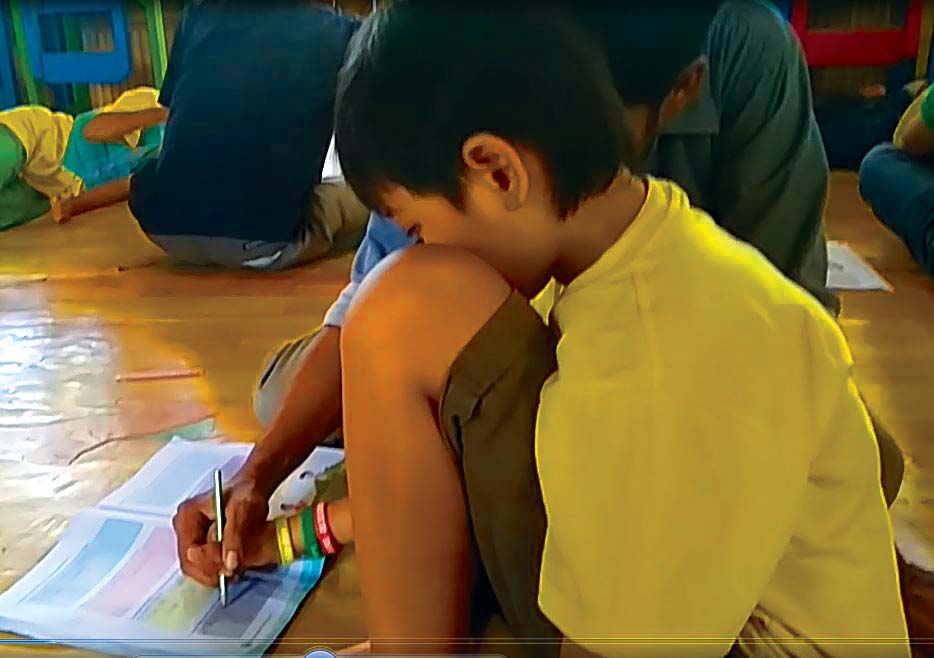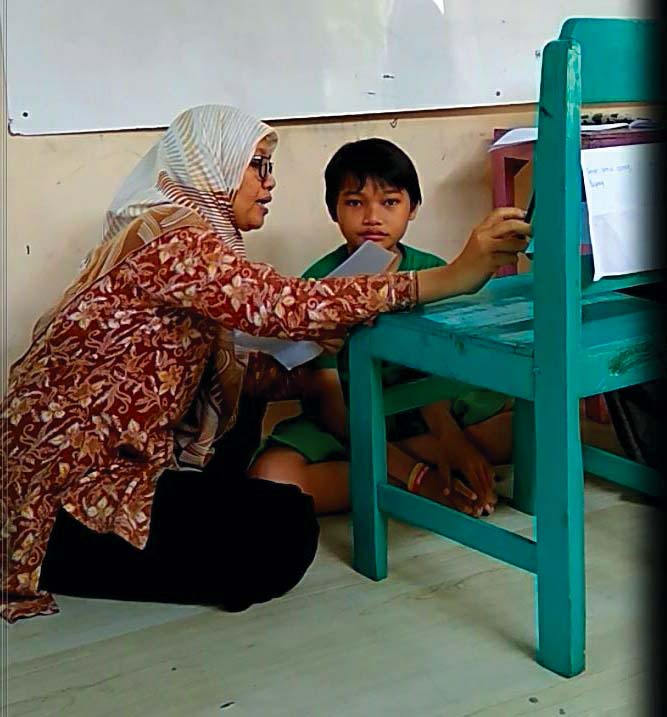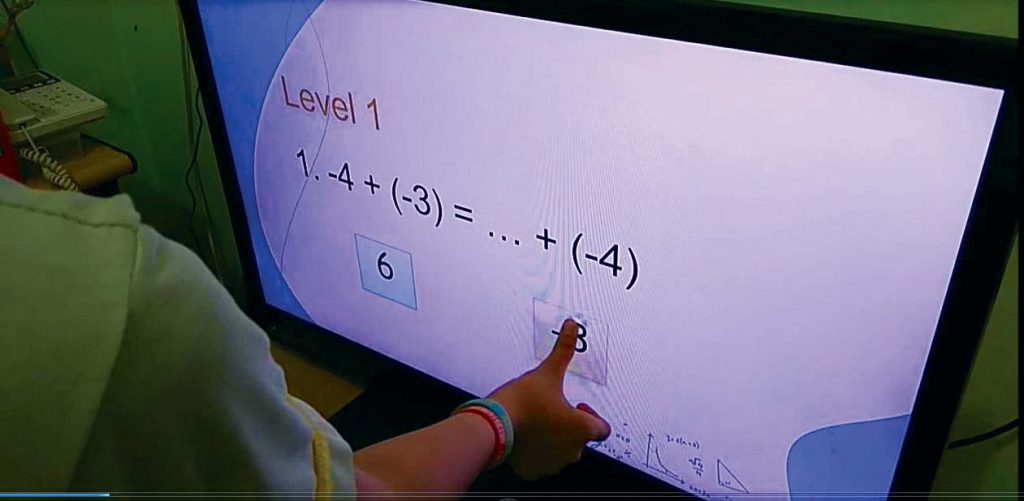Reny Indrawati
In this article Reny shares her practical experience of being the mother of a son with cerebral palsy who is non-verbal and also diagnosed with intellectual disability and epilepsy. She describes her journey of enabling his access to education in Indonesia, and how they adjusted to online learning during the COVID-19 pandemic.
Background
Education is for everyone. But, when it relates to a child with a disability, we need to focus lots of energy for them to be able to access the education system. Seven years ago I tried to find a school for my son, Lintang Adnan.
Adnan had progressed in his therapy and to progress further it was suggested that he go to school. Inclusion into mainstream schools was not widespread and so I tried one of the largest special schools in the city. He was rejected because he was ‘too active’, and the school felt that they would not be able to handle him.
I did not give up but had to find a private school that was willing to accept him. The school did not think that they had the skills but were very enthusiastic about having him as one of their students. However, they needed a support assistant so Adnan could be actively involved in school activities.
Before the pandemic
When Adnan started elementary school, I had to attend with him as the school did not feel able to handle his epilepsy. Adnan was very happy with school, even though his epilepsy prevented him from going every day. Most of the activities took place in the outdoor area in the first three grades. The school uses natural resources as a medium for children’s learning, which really helped Adnan to understand lots of information. He also learned how every child has their own character and how to make friends.
While Adnan made progress at school, I decided that my goal was to minimise my involvement in assisting him. At school, I helped him with reading, writing and mathematics. For example, when Adnan held a pencil I helped him improve his fine motor skills and hand coordination so he could move his pencil correctly and the teacher could read his writing. For reading and mathematics, I had to read Adnan’s answers out loud to the teacher.

I had to find a way for Adnan to answer the questions himself starting with ‘yes’ and ‘no’ responses. I write the answers on a piece of paper and when there is a question from his teacher, Adnan needs to choose which one he wants to say for me to read it for him. If Adnan wants to answer ‘yes’, he will clap his hand or nod his head, and he shakes his head for ‘no’. This system increased Adnan’s involvement in school activities independently.
It may be very simple and easy for other children, but for Adnan it needs a lot of effort and concentration to do the work. In the 5th grade, the lesson materials are more complicated. Adnan’s classmates wanted their teachers to give him exactly the same material as them, because they believe Adnan could do it. Adnan just needs a different way to learn and to express it.
As a mother and his educational assistant, I was moved by Adnan’s classmates, and tried to find ways to increase his independence. Working in collaboration with the teacher, we looked at changing how he could answer questions. The teacher started by giving multiple choices so Adnan could think and decide the answers by himself.

I read the question and multiple answers from the teacher so Adnan can choose by pointing at the paper that I put on the chair
This method helps Adnan’s curiosity, eagerness, and enjoyment in the learning process. The first semester in 5th grade was a new learning process that made education more accessible for Adnan.
During the pandemic
One of the best things about studying for Adnan was communicating with friends, who are willing to wait for him to answer their questions using gestures and check their translations with me.
However, in the second semester of 5th grade, the COVID-19 pandemic began, which was a shock. The learning process had to change to online. I did not think that Adnan would enjoy the process. I tried to find more ways so Adnan could enjoy his online learning as well as being able to access the lesson materials from his teacher.
Both teachers and students need to adjust to online learning. The materials from the teacher contained lots of written text which was difficult for Adnan to understand. I tried to support his learning by maximising the use of internet and platforms like YouTube.
During his 6th grade I use technology to help him express his opinion and answer more actively. We use YouTube links, animations and pictures to represent text so Adnan can understand written materials from the teacher and the context of the lessons.
If there is a test from his teacher, I adapt it into a PowerPoint presentation because Adnan struggles to write lots of words. By adjusting the format, Adnan can choose directly using the laptop. This also helps us to adjust the text size and format to help him read the choices easier. When we were studying at home, I documented the process using video so his teacher would know that Adnan answered all the questions by himself.

Adnan is registering for junior high school at the same school as his elementary studies. The recruitment process requires an interview session with him. His teacher used the same methods as I do for this interview. Adnan was given several choices on a piece of paper, which he could answer independently without my help. They were not a, b, c multiple choices, but choices with several words together. Adnan could actively point to his answer without my assistance.
We just needed to find a way to give Adnan a voice. Although the pandemic has been a difficult time, for Adnan and me it has been a blessing as we have been able to find a new learning process.
Reny Indrawati is the mother of a child with cerebral palsy and a disability advocate for Lintang Adnan. She can be contacted via the EENET office.
